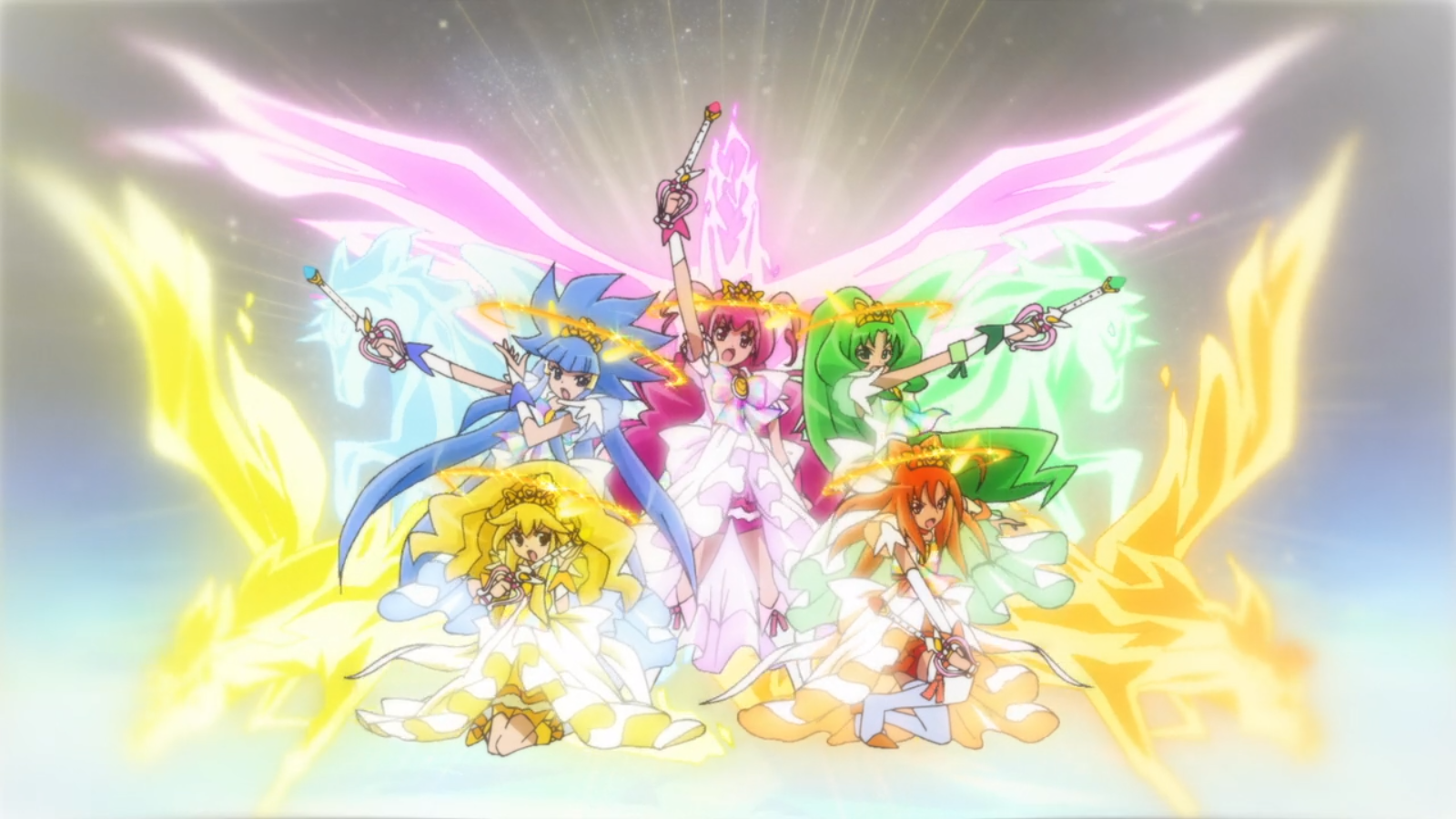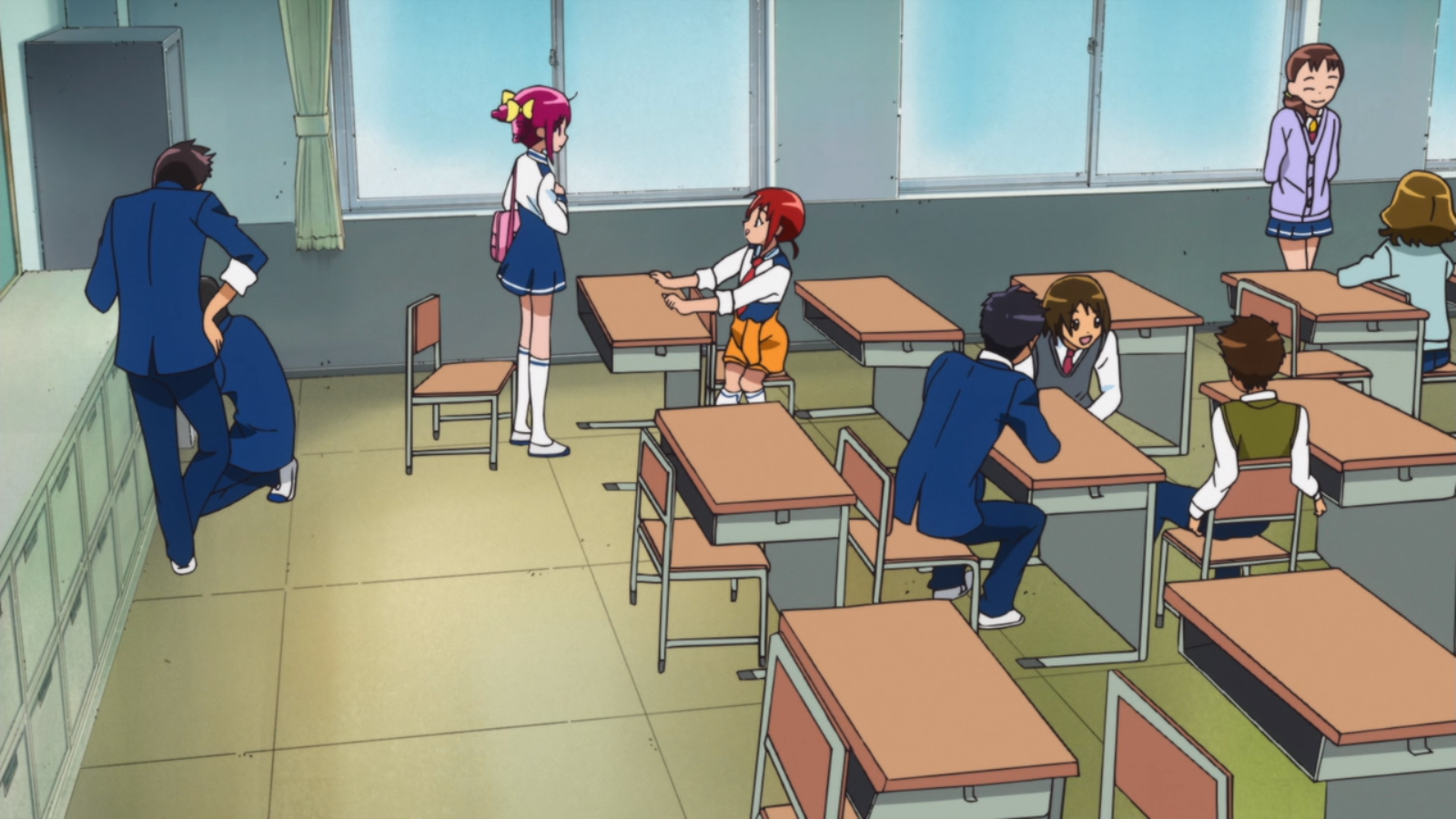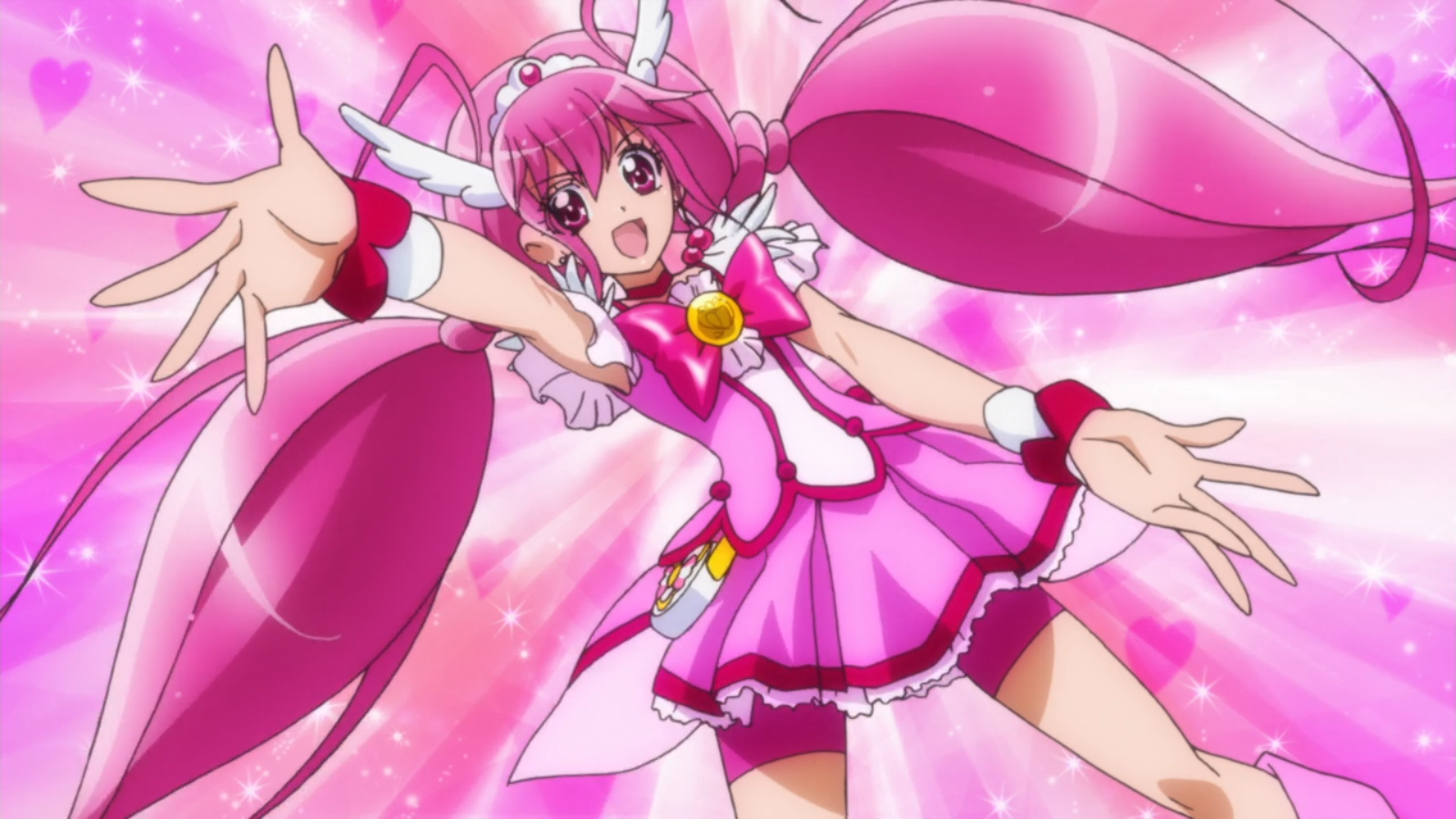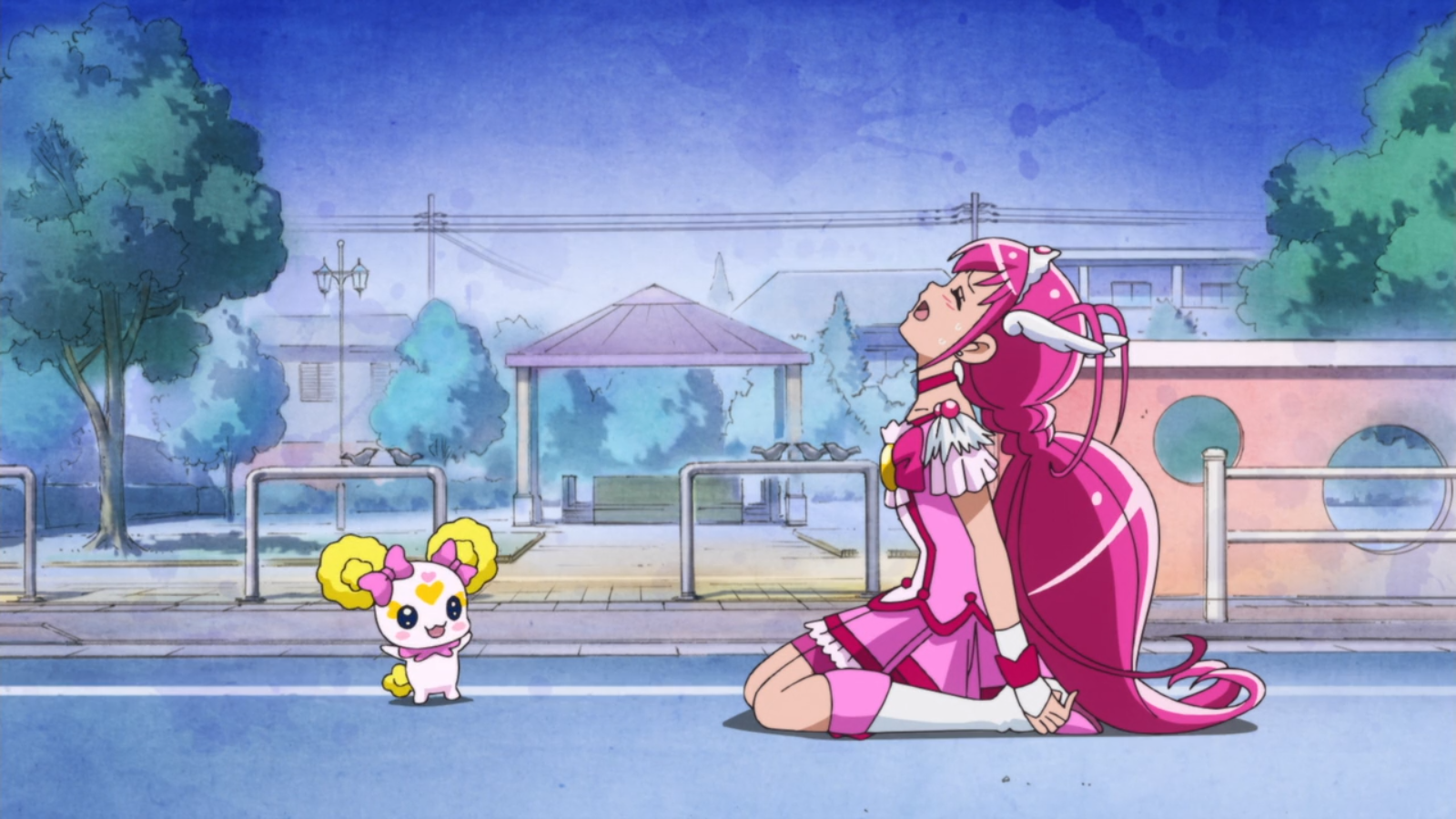The year 2004 represents a sea change in the magical girl genre. In that year appeared two series that would give a new look and feel to mahou shoujo. One was Magical Girl Lyrical Nanoha, a series aimed primarily at the neckbearded adult male crowd, and the other was Futari Wa Pretty Cure, aimed at young girls. Both would produce spin-offs. Pretty Cure became a cash cow franchise for Toei Animation, with an impressive total of fourteen series to date, the most recent of which, KiraKira☆Pretty Cure a la Mode, began in February of 2017 and is still ongoing as of this writing. There are also several movies, including crossovers that bring together cures from different series.
Both of these franchises are notable for introducing to the genre a heavier emphasis on physical combat. Both series also completed the process of all but eliminating the previously omnipresent romantic subplots in favor of a focus on feminine camaraderie.
The director of the original Pretty Cure was Daisuke Nishio, who had previously directed Dragon Ball and Dragon Ball Z, and he brought to this magical girl series the same kind of martial arts sequences for which the Dragon Ball series is popular. Pretty Cure is you, might say, a shoujo series with fight sequences like a shonen series: It is simultaneously unabashedly girly and unapologetically violent.
This was perhaps an inevitable or obvious direction for the genre to take. Sailor Moon, which popularized the “magical girl warrior” type, had already drawn heavily on the live-action superhero franchise we know here in America as Power Rangers, which also relies on intricate choreography. But Sailor Moon had been content to leave its hand-to-hand combat mostly implied rather than animated.
Pretty Cure unquestionably has several flaws, but it does deliver on the Kung fu, though its fight sequences are intensive enough that it can only produce one every three episodes. It also places heavy emphasis on friendship and teamwork.
In spite of the franchise’s place as a staple of the magical girl genre, until very recently, only the original Futari Wa Pretty Cure was legally available to the English-speaking audience. It was originally licensed by 4Kids and can now be found on Crunchyroll.
That situation has changed thanks to Netflix, which has licensed two Pretty Cure titles, Smile Pretty Cure! and Doki Doki! Pretty Cure, having decided (obnoxiously) to change their titles to Glitter Force and Glitter Force Doki Doki, respectively. They even have the audacity to call them “Netflix originals.” These are produced through Saban, the same company that had adapted Super Sentai into Power Rangers.
But let us not look a gift horse in the mouth. It’s absurd that these series weren’t available in English already. Netflix and Saban are doing the job that more rigorous translators of anime won’t do.

I’ve not had time to watch the whole series. I’ve only just started, so my comments here are preliminary and nothing like a full review.
To begin with … I hate the dub. I haven’t even seen the sub (I don’t do bootlegs), but I hate the dub anyway. The protagonist “Emily” (originally Hoshizora Miyuki) is played by Laura Bailey, who’s voice is frankly obnoxious. When the words “girl power” actually showed up in her first line of dialog, I wanted to choke a translator. Then a little later she said “you’re not in Kansas anymore,” and I was ready to kill somebody.
Anyway, Emily has transferred to a new middle school. She’s a goof with a love of fairy tales who, like most magical girls, can’t drag herself out of bed on time. On her first day of class, in the most unrealistic and awkward way possible, she meets four other girls, Kelsey, Lily, April, and Chloe, who actually deliver their character biographies in impromptu fashion while Emily is introducing herself to her new class. I don’t know if this is in the original (it probably is) but man, it’s awkward,and of course the details of their characters are impossible to remember because the show hasn’t given us a reason to care yet.

Their distinctive coloration makes it obvious that these four are, along with Emily, going to be our main characters. But just in case that wasn’t obvious enough, Emily comments that she’s seen each of them in a prescient recurring dream in which she’s part of a superheroine team.

Emily discovers a portal to a fairy tale world in the school’s library (haven’t we all?) where she learns that she’s destined to do battle with the evil Emperor Nogo (originally Pierrot), who wants to give all the fairy tales unhappy endings. After returning to Earth, Emily finds a fluffy little creature called Candy who gives her a glitter compact with magical makeup that can transform her into Glitter Lucky (originally Cure Happy).

Emily does battle with the villainous Ulric (originally Wolfrun), an anthropomorphic wolf who uses a magic book to suck away people’s hopes and dreams, and who can also summon monsters.
The fight goes much as expected: Glitter Lucky initially panics, but eventually figures out how to use her magic and blasts Ulric’s summoned monster before he retreats.

It’s a by-the-numbers intro for a magical girl series, really. It’s awkward and somewhat weak as it quickly runs through the standard material, but that’s hardly unusual for a first episode, which has to get through all the origin story stuff. It’s not terrible, but I can’t shake the impression that we’re getting an inferior version.

